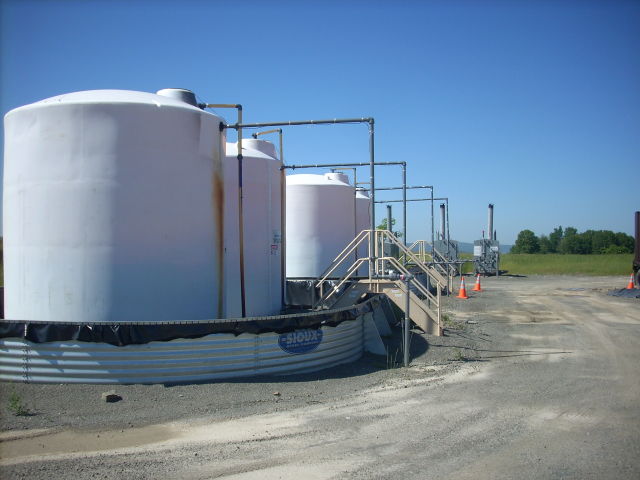Fracking gas leaks are no worse than conventional wells
Ars Technica » Scientific Method 2016-02-09

Storage tanks near some Pennsylvania natural gas wells. (credit: Gerry Dincher)
Fracking, enabled by the technology to drill oil and gas wells that turn horizontal to follow specific layers of rock, has driven a boom in US natural gas production. But how much of that natural gas (which is mainly the potent greenhouse gas methane) is leaking into the atmosphere before making it to a power plant or your furnace? It's not just an idle question. When natural gas displaces the use of coal, it results in significant reductions in CO2 and other pollutants. Leak enough, however, and that climate benefit might just disappear.
The public debate has treated this leakage issue as specific to the process of fracking. But “conventional” natural gas wells—vertical wells drilled through porous rocks that give up natural gas without the need for new fractures—have always leaked. A study by a Carnegie Mellon University group led by Mark Omara measured leakage at both conventional and fracked wells in Pennsylvania and West Virginia. The results are a little complicated.
The researchers visited 18 conventional natural gas sites and 17 fracked sites (including 88 fracked wells, which are commonly drilled down from a central pad before splaying out horizontally). Between 100 meters and a kilometer downwind, they made methane and ethane measurements. To control for the dilution of the leaked gas as it spread and swirled in the wind, they added a leak of their own. Right next to the gas wells, they set up tanks of nitrous oxide and acetylene and opened the valves to leak at a constant rate. By checking their measurements of those gases downwind, they could calculate the true natural gas leak rate.